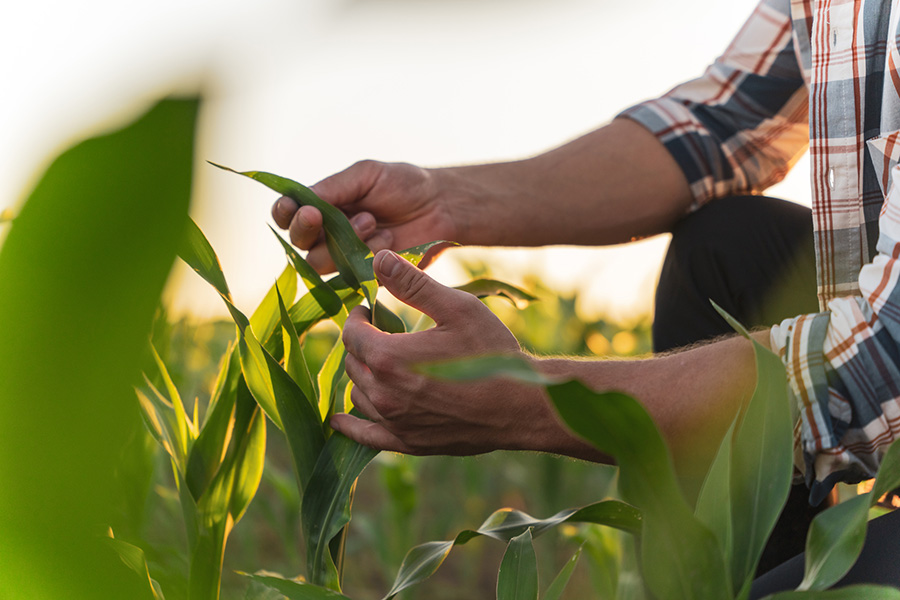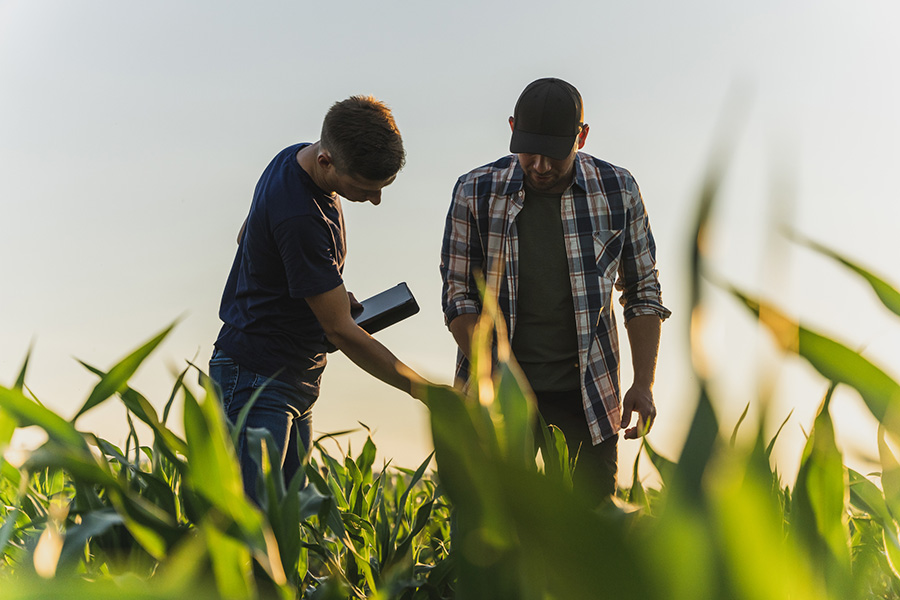Carbon is the stuff of life.
By weight, it makes up roughly 18 percent of the human body, 43 percent of a corn plant, and 50 percent of most trees. Fundamental to both photosynthesis and respiration, we quite literally could not exist without it.
At the same time, there is strong evidence that an imbalance in Earth’s carbon cycle — namely, too much carbon in the atmosphere — is the leading driver of global climate change, which many experts agree represents an existential threat to humanity. For this reason, we are increasingly interested in measuring carbon intensity as a way of evaluating environmental impact. The lower the carbon intensity score of a process or product, the better. The higher, the more reason to decarbonize.
“Bioethanol and agriculture are joined at the hip,” said Doug Berven, POET Vice President of Corporate Affairs. “Efforts to decarbonize bioethanol aren’t just good for us; they help create and expand broader agricultural markets.”
Berven also points out the benefit to humankind. The more that agriculture comes in contact with innovation, the more we will learn about how to source what we need from above the ground and the less we will need from under it. Through this process, we can reduce our reliance on fossil materials and allow a more natural carbon balance to be restored.
Carbon intensity scores aren’t guesswork. They are generated with the use of stringent mathematical models — such as the Feedstock Carbon Intensity Calculator (FD-CIC) created by Argonne National Laboratory — and account for key production factors that include user-specific information. Calculating the carbon intensity of agricultural products, for example, requires looking at data from individual farms.
But the average 21st-century farmer already has a lot on their hands dealing with not only well, farming, but also ag-tech, proprietary systems, and stakeholder and government obligations. Is it really necessary to add decarbonization to the list? “Necessary” might be a strong word, but on the other hand, “beneficial” might be an understatement.
Decarbonization: What is it good for?
The most clichéd observation about decarbonization’s benefits might also be the most important one: it’s good for the planet. Lowering the overall carbon intensity of agriculture stands to have a massive benefit to global sustainability targets, and this relies heavily on maximizing the potential of crops and croplands to act as natural carbon sinks. But in addition to helping the greater good, here’s what farmers can expect to get out of efforts to drive down carbon intensity:
More sustainable farming
“Over the years, farmers have gotten incredibly adept at balancing short-term economics with long-term production capability,” said Berven. “Even today, however, we’re continuing to learn more about how the natural environment works and how to best care for it.”
As it turns out, there’s a significant overlap between agricultural practices that lower carbon intensity and those that promote the health of localized ecosystems, especially soil microbiomes. For example, minimal tillage, cover cropping, and efficient management of byproducts can all contribute to decarbonization by improving soil structure, nutrient retention capacity, and resistance to drought and flooding. Reducing the use of fossil-based fertilizers is also healthier for both farms and the planet and can be achieved through the use of technologies like precision agriculture. Grouped together, these practices are often called “regenerative” and demonstrate the dovetailing of decarbonization and long-term production.
Cost reductions and new revenue streams
Going back over the list above — healthier soil, reduced tillage, less fertilizer, decreased negative effects from drought and flooding — it also serves as a “what’s what” of potential cost reductions for farmers. And, in a sector where profit margins have fallen drastically over many decades, they can have disproportionate economic benefits.
But cost savings aren’t the only economic upside to less carbon-intense practices. The global focus on carbon has led to the creation of carbon markets, wherein certificates related to carbon management can be bought and sold. Farmers who adopt methods of increasing organic soil carbon or decreasing their above-ground emissions can earn verified carbon credits that can be sold to other individuals or organizations — a practice that is aptly referred to as “carbon farming.”
Decarbonization also opens the door to a widening range of funding options for the agricultural sector. Many are through government initiatives, including the Inflation Reduction Act of 2022, which has earmarked $369 billion for energy and climate change-related programs over the next ten years — but private investment in sustainability-related technology and programs is also at an all-time high and can provide a serious boost to farmers who are exploring innovation or expansion, as well as those who are simply working to keep their farms profitable.
Valuable partnerships
Efforts to decarbonize can also help farmers to align with other organizations that are pursuing similar goals. These organizations may be within or adjacent to the agricultural sector, or they may be in a variety of other areas, such as education, finance, manufacturing, or transportation. Beyond financial resources, these partnerships can offer various types of knowledge, skill, and human capital that can benefit farmers and agricultural value chains.
And, when partnerships are created with companies like POET that are pioneering decarbonization solutions, all of these things come together.
Carbon intensity scoring is one of the main landmarks in this new frontier of farming. Through the use of standardized methodologies, carbon emission reductions can be tracked accurately and reliably. This allows for objective, data-based decision-making by producers, consumers, investors, and regulators.
“Carbon intensity scores give clarity and trustworthiness in the industry,” said Jeff Heikes, POET Senior Vice President of Research. “Without them, producers and consumers of agricultural products would essentially just be guessing at which technologies to invest in or which companies to partner up with.”
Some agricultural producers may be hesitant about the prospect of getting up to speed on carbon markets, developing a carbon management plan, or navigating new sets of guidelines and regulations.
But through its upcoming series on carbon intensity and decarbonization in Vital, POET hopes to not only simplify some of these concepts, but also to show just how substantially they can benefit farmers — and the world.









